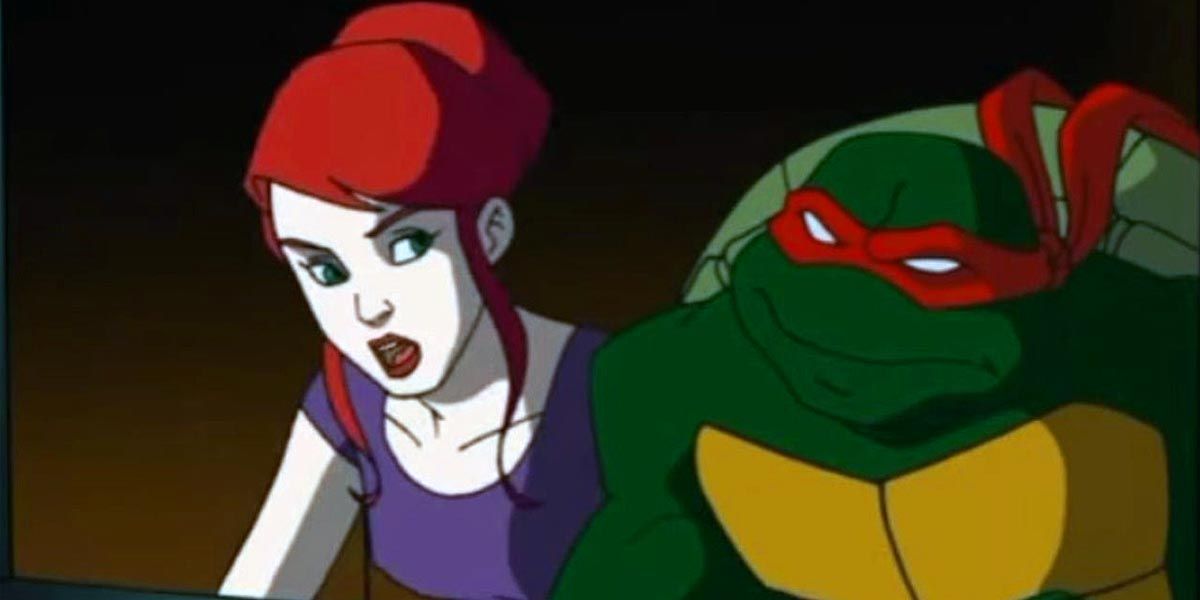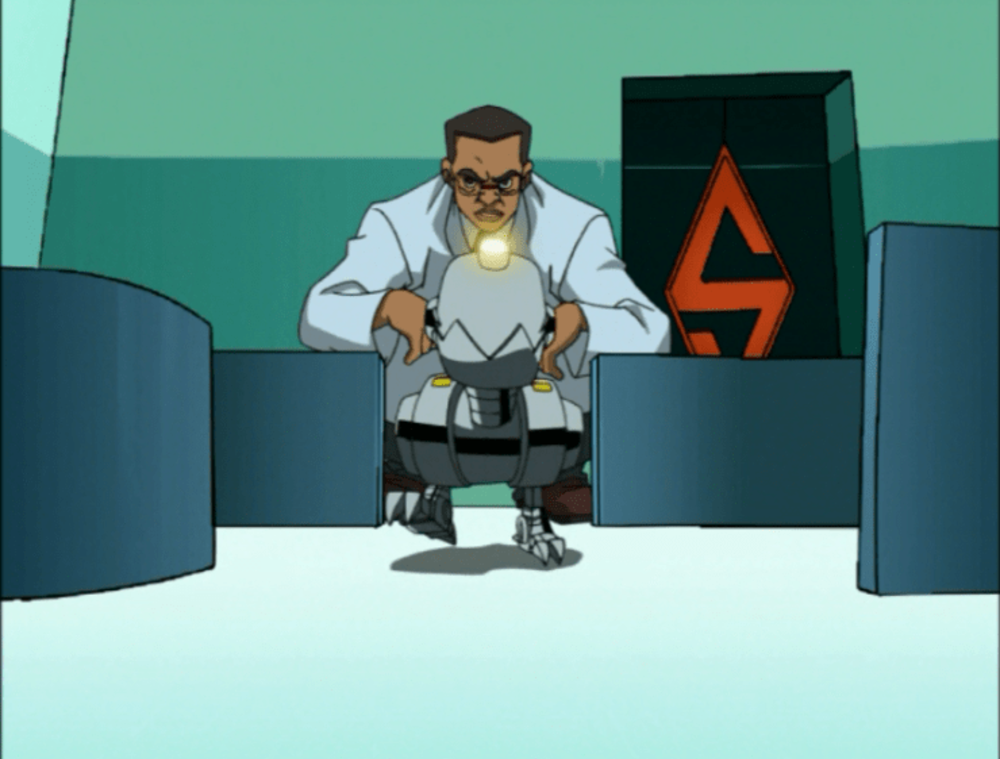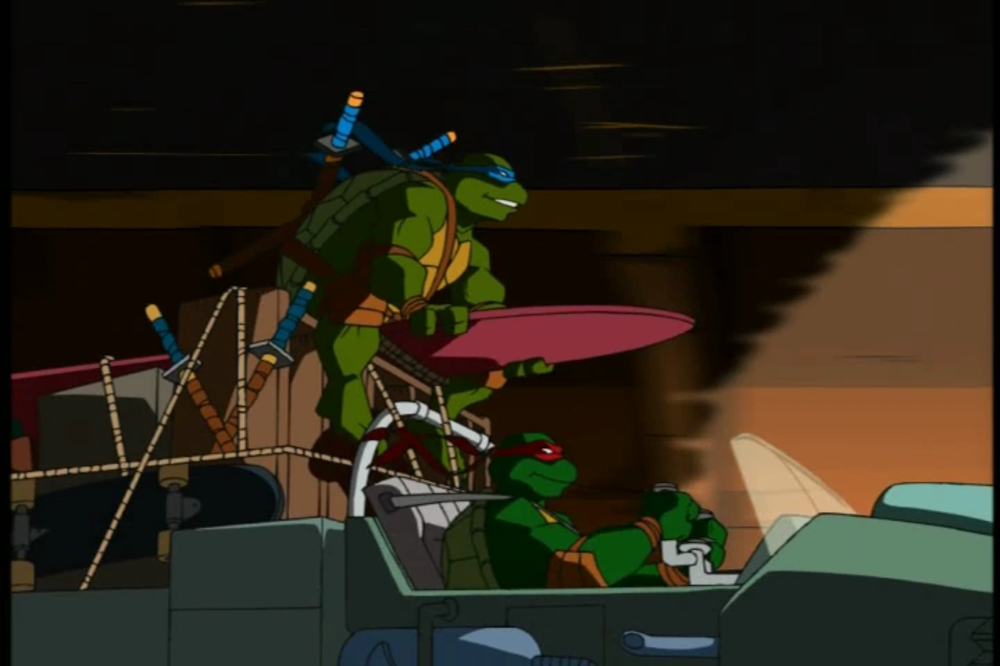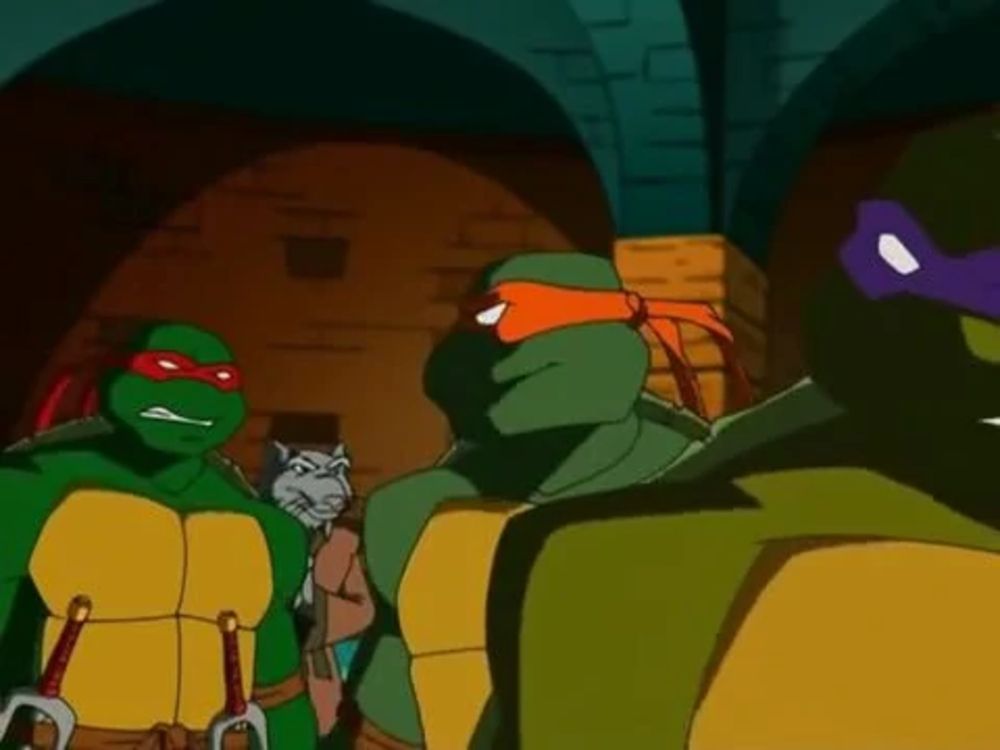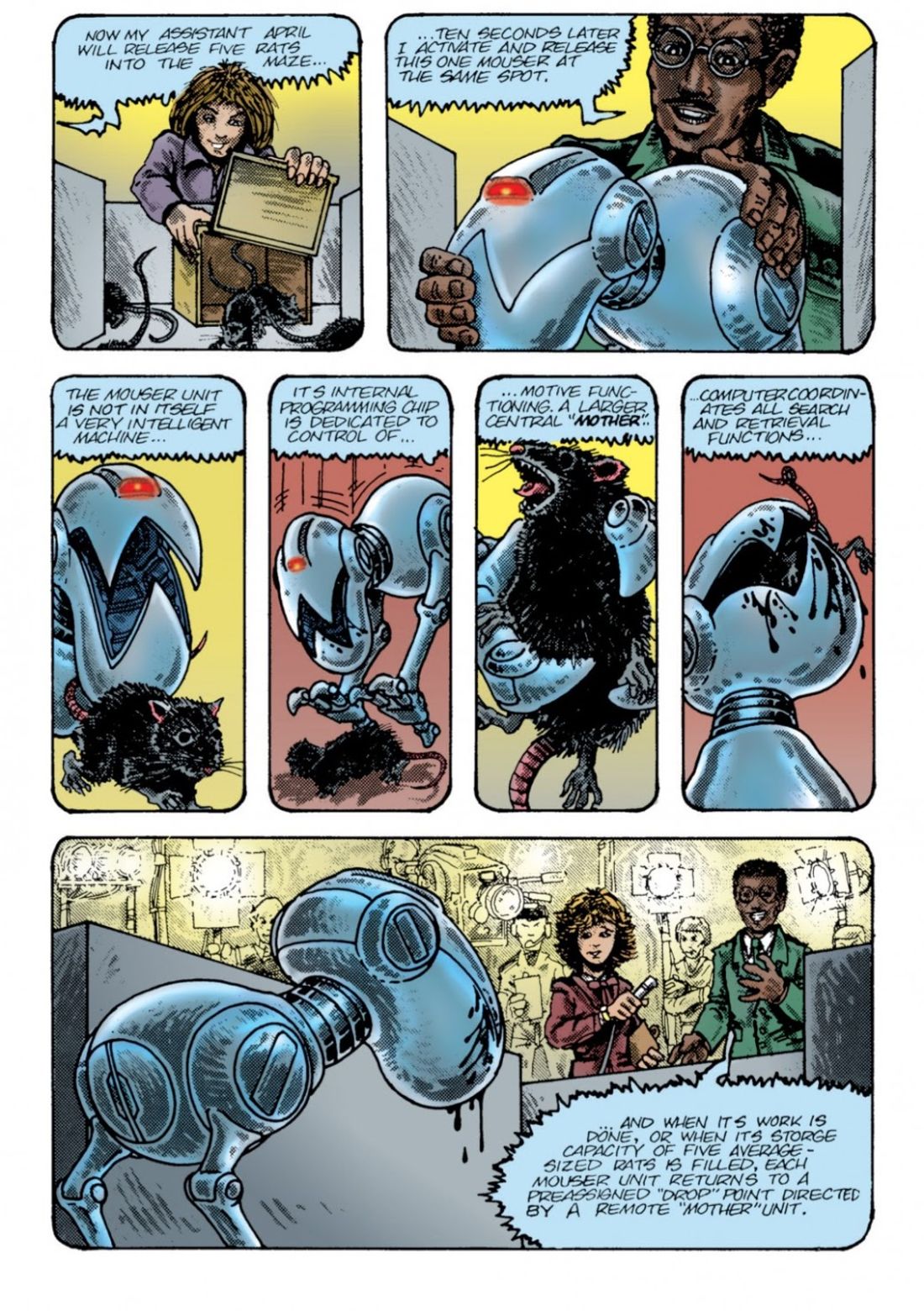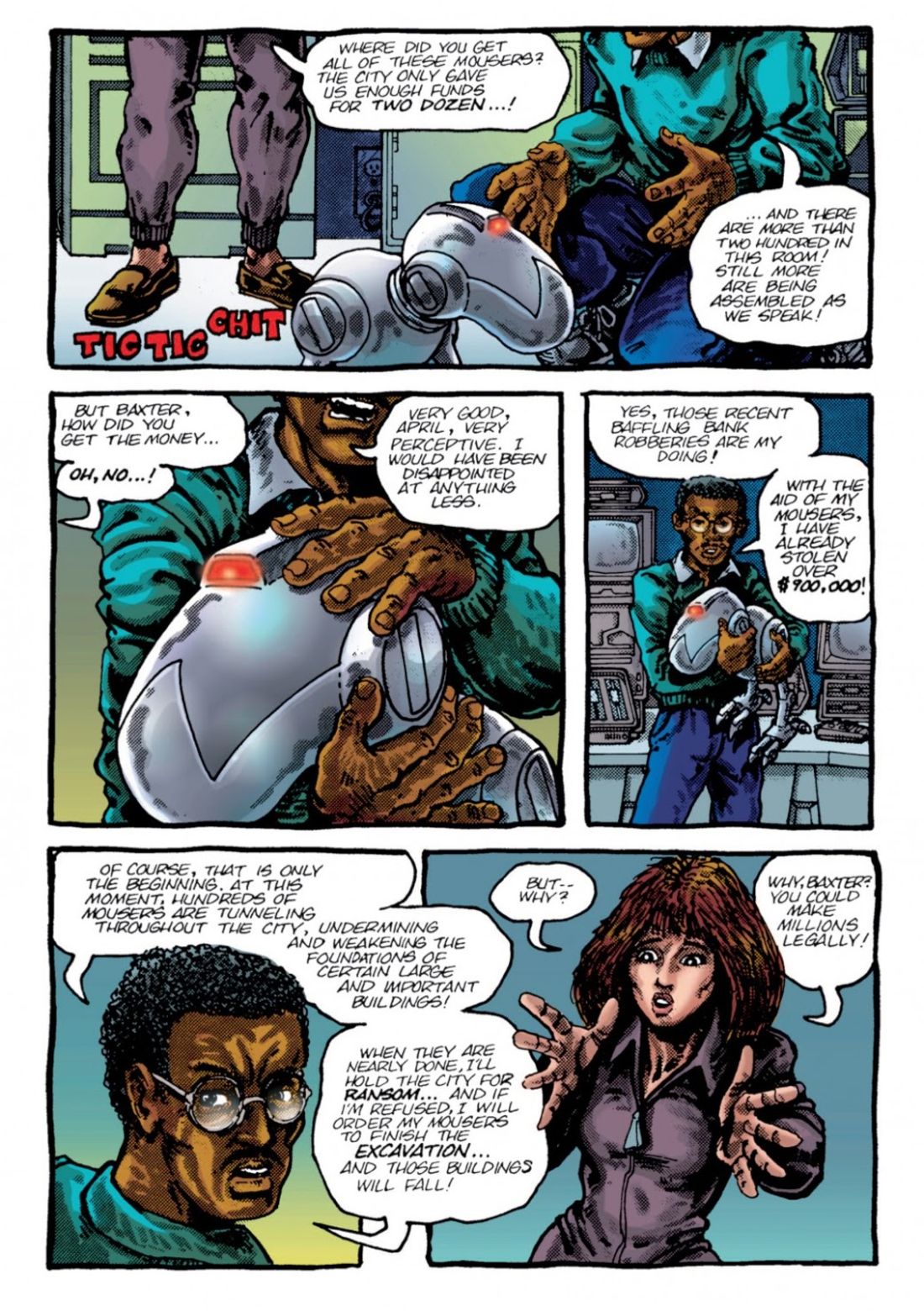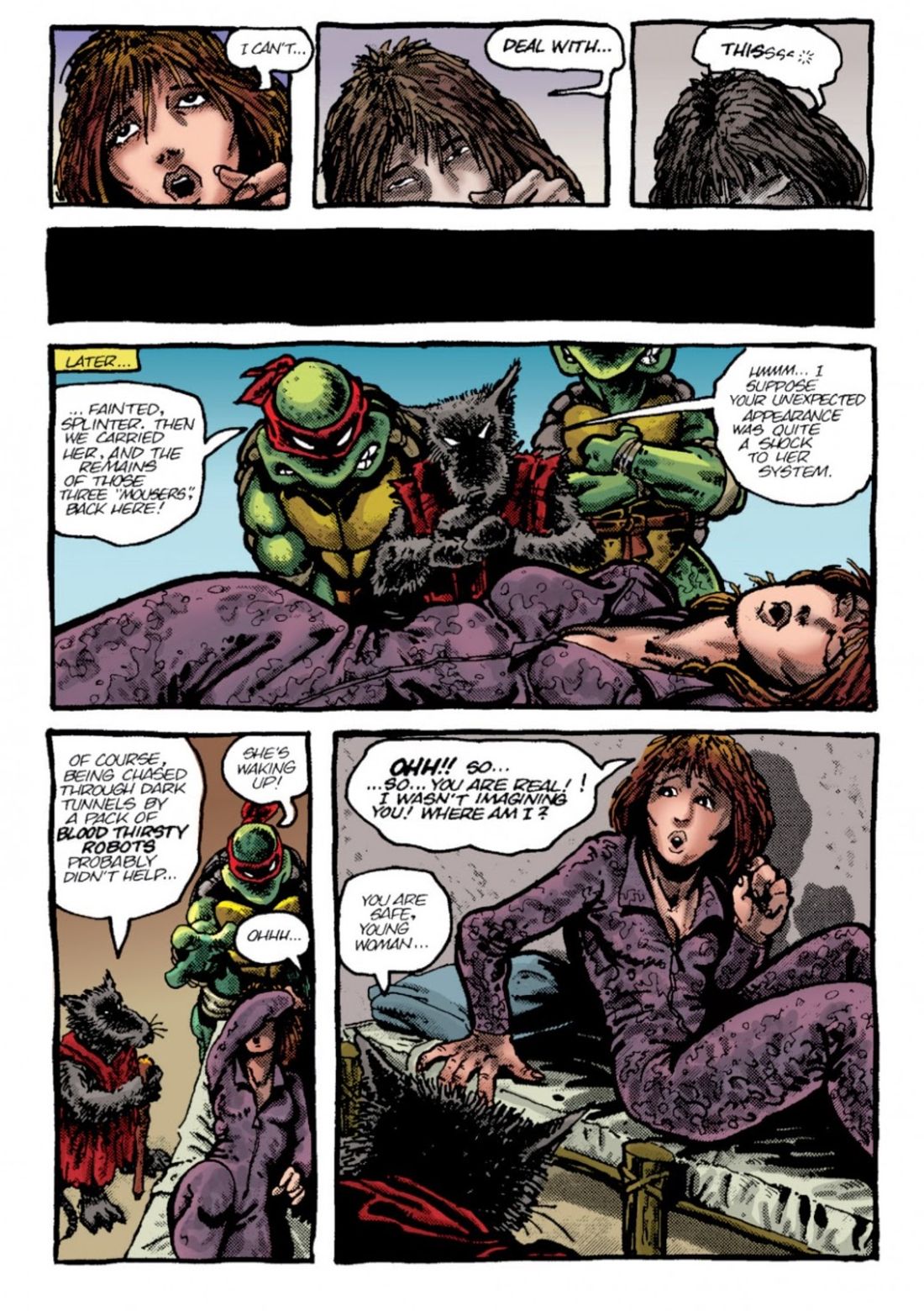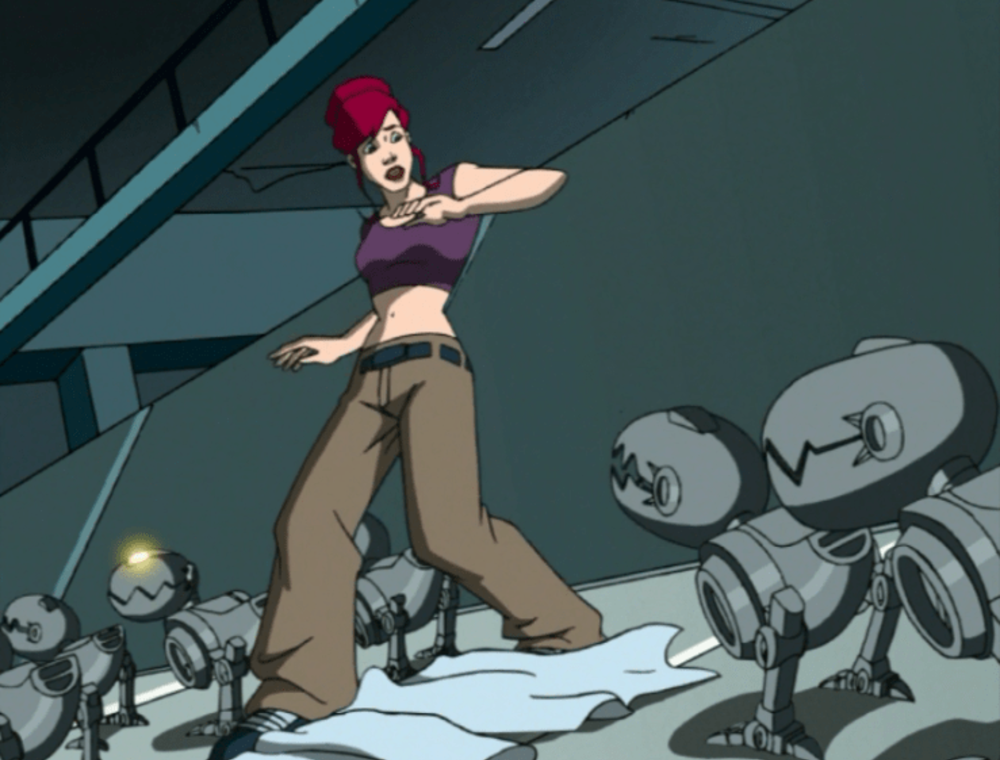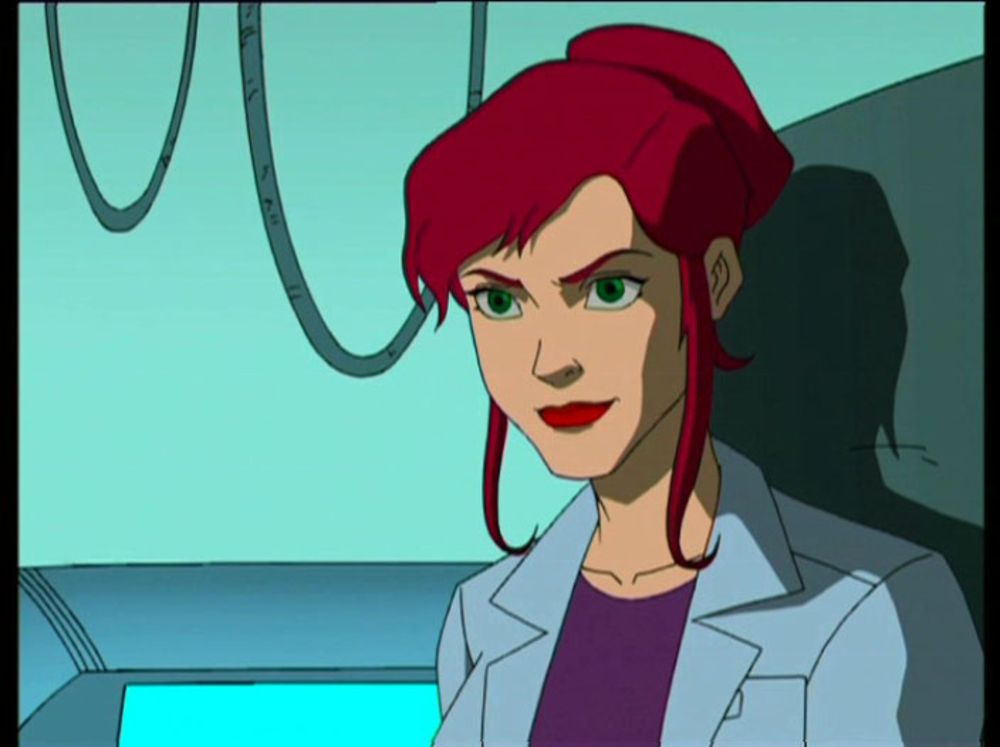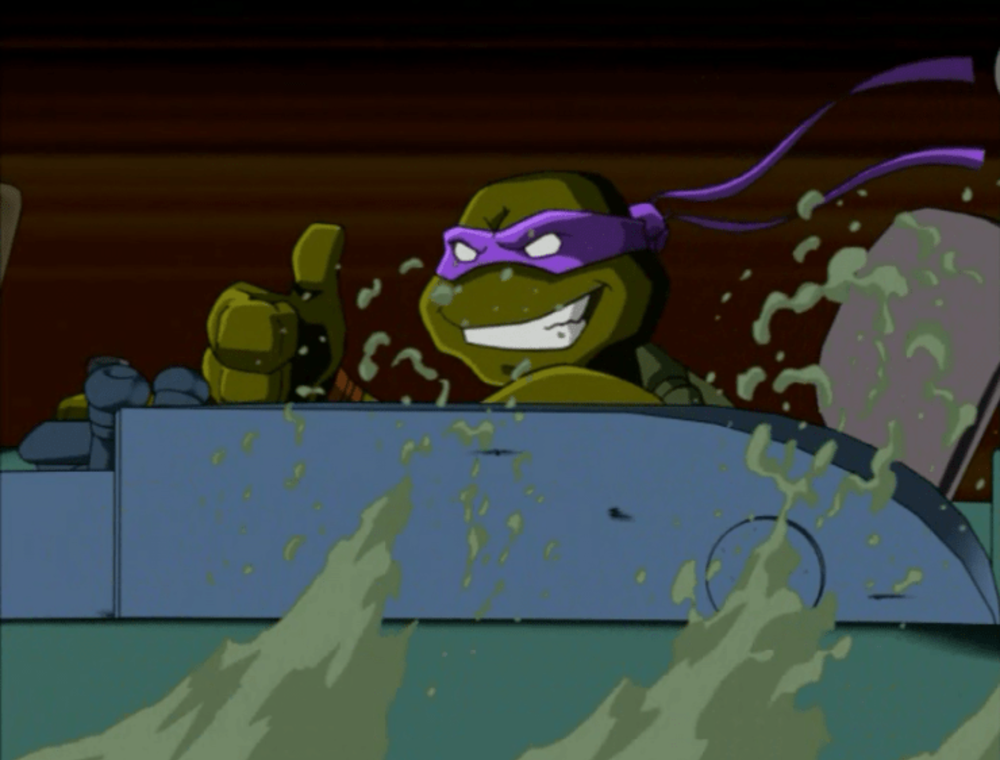Welcome to Adventure(s) Time's 109th installment, a look at animated heroes of the past. This week, we examine the 2003 Teenage Mutant Ninja Turtles animated series, and its close ties to the 1980s indie comic that inspired it. And if you have any suggestions for the future, let me hear them. Just contact me on Twitter.
"A Better Mousetrap" is the second episode of the revamped series, airing on Feb. 15, 2003. Written by animation veteran Marty Isenberg, the episode picks up where the series' debut left off, with the Turtles building a new lair in the sewers, following an attack from the mysterious Mousers.
An area where the cartoon deviates from the comic is the casual way futuristic gear and vehicles are used by the Turtles. In the early comics, the Turtles are played as nearly homeless, with technology no more advanced than old tube television sets and the van they borrowed from their human pal April.
Keeping kids in mind and likely appeasing the toy company merchandising the Turtles, the cartoon has no problem establishing several hi-tech, anime-inspired gadgets. When Leonardo and Raphael go by their old home to pick up some belongings, they don't simply walk, they buzz there and back in a small craft that looks like it came from a manga Star Wars adaptation.
One advantage the show has over the original comics is foresight, as the mythology of the Turtles had already been well established by 2003. Following the example of X-Men:The Animated Series years before, each episode ties into a larger narrative, with seeds planted for later stories. Here, the Mousers don't simply appear out of nowhere, they're a mystery menace that sets the plot in motion in the preceding episode. (Interesting that this series aired on Fox, the same network that told X-Men to knock off that long-form storytelling nonsense.)
The comics were definitely making it up as they went along. Heck, creators Peter Laird and Kevin Eastman just assumed the first Teenage Mutant Ninja Turtles comic would be the only one! The second issue was created in response to the surprise success of the first. This is the story that introduced Dr. Baxter Stockman, the Mousers and April O'Neil to canon. There's no Shredder secretly pulling the strings in the comic, because he'd already been killed off in the first issue.
The cartoon's producers (which included Laird) went into the series armed with knowledge of what fans responded to, so there's a lot of picking and choosing when it comes to the source material. Shredder is now a shadowy behind-the-scenes villain, manipulating others and biding his time until he makes his grand debut. One of his pawns is Baxter Stockman, creator of the Mousers, small robots designed to eliminate New York's rodent problem.
"A Better Mousetrap" features numerous moments borrowed from the comic's second issue (albeit with some noticeably different fashions). We have the Turtles watching scientist Baxter Stockman, joined by his assistant April, announcing on television the creation of the Mousers.
April grows suspicious of her boss' motives. In the comic he's merely using the Mousers to rob banks...
...but in the show, Baxter is secretly working for Shredder. One alteration from the comics has Stockman re-imagined as a coolly arrogant intellectual, willing to stand up to Shredder. (Also a change from his portrayal in the 1987 cartoon.) In the comic, Stockman is much more of an unhinged, mad scientist.
Both stories have Stockman siccing the Mousers on April, after she asks too many questions. And, ultimately, the Turtles encountering a terrified April in the sewers and saving her life.
One bit from the episode isn't a reference to the original comic, though. Michelangelo's response to April (the episode's closing line), "Can we keep her?" is a nod to the 1990 live-action film.
DESIGN-Y
The cartoon designs for Baxter Stockman and April debut here, and they look solid. Cartoons were in a transition from the somewhat cartoony look of Bruce Timm's '90s shows to full-on anime insanity during this era, but TMNT is pretty restrained. The characters are animation-friendly, but still attractive and not much different from what you see in a comic book.
April is presented as, perhaps, what was stylish at the time. Seeing her wear a skimpy halter top at her serious laboratory job is amusing. She also isn't presented as a true redhead here, as that's clearly meant to be a dye job somewhere between purple and red. The 2002 Spider-Man film treated famous ginger Mary Jane the same way.
CONTINUITY NOTES
Presenting April O'Neil as a young lab assistant and not an established reporter certainly differs from the 1987 cartoon, which is where most people know her. (The 1990 film also followed the cartoon's lead here, even though most of the movie was based on the original comics.)
This episode marks the first time Baxter Stockman is portrayed as a black man in an outside media adaptation. The original cartoon didn't want one of its few minority characters portrayed as a sycophantic toady for the villain.
Another example of the show foreshadowing later events is the broken canister branded with the letters TCRI, which the Turtles have been keeping in their old home. TCRI (sometimes written as TGRI) has a significant place in TMNT lore. In this canon, they're known as the Techno Cosmic Research Institute, with a connection to the alien Utroms and Shredder.
HEY, I KNOW THAT VOICE
April's voice actress, Veronica Taylor, is likely best known for voicing Ash Ketchum in the English dub of Pokémon.
"THE SCHOOL FOR GIFTED REPTILES"
There is a brutality to those early comics the show just isn't going to replicate on Saturday mornings. But the episode is successful in selling the Mousers as a menace, and setting up a more elaborate world for the Turtles. Remember that the general public mostly knew the Turtles from the '80s cartoon, which wasn't overly concerned with continuity, or presenting true threats to the team. It was a cute after-school toy commercial that amused kids and had no higher ambitions.
But 2003's TMNT really does play like a comic book on TV, just like X-Men before it. Subplots, ongoing character dramas (this episode, Leonardo and Raphael have a physical confrontation when they disagree on how to handle Stockman), and numerous nods to the source material. The characters do crack jokes, but it feels consistent with their characterization as teenagers.
The tone of the show itself isn't a joke; it's a serious (it not a little crazy) world, where the heroes are put through their paces and happy endings aren't guaranteed. Going in this direction wasn't a sure bet, but the results are impressive. It's unfortunate this version of the team couldn't have debuted ten years prior, during the heyday of shows like X-Men on FOX. (Although, who knows how the network would've reacted to the season-long arcs back then.)
So that’s all for now. Until next time, check out the G. I. Joe novels I wrote for the Kindle Worlds project for free over at Smashwords.

